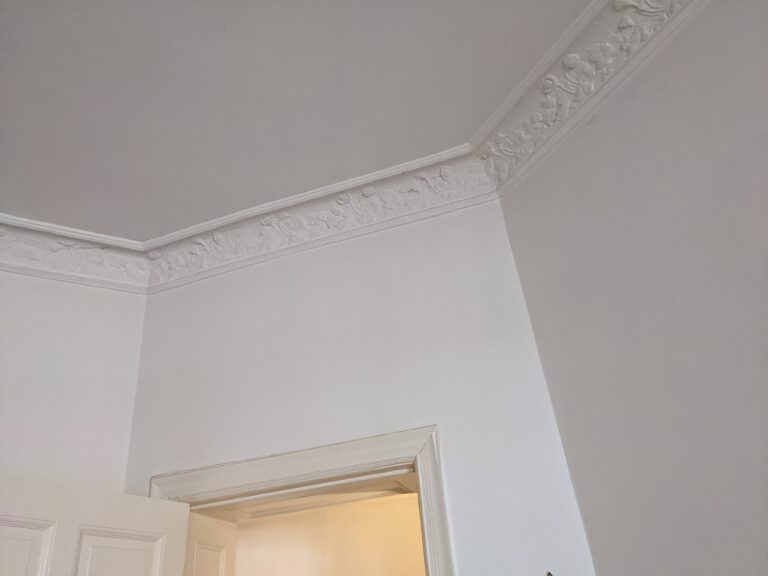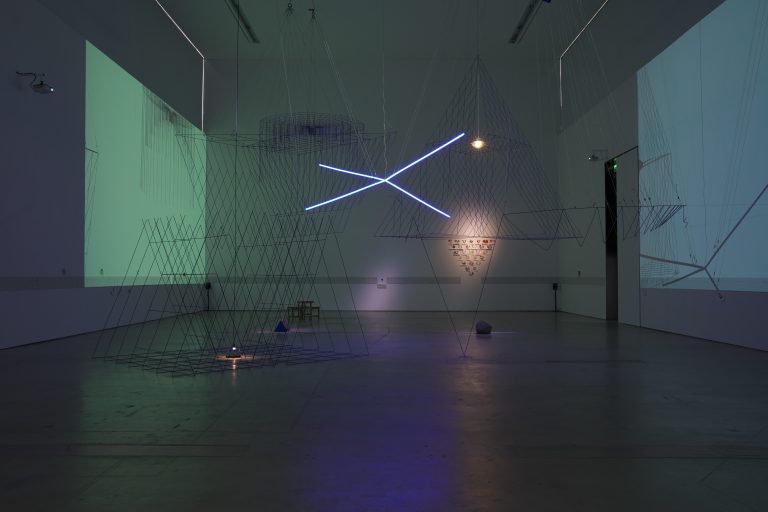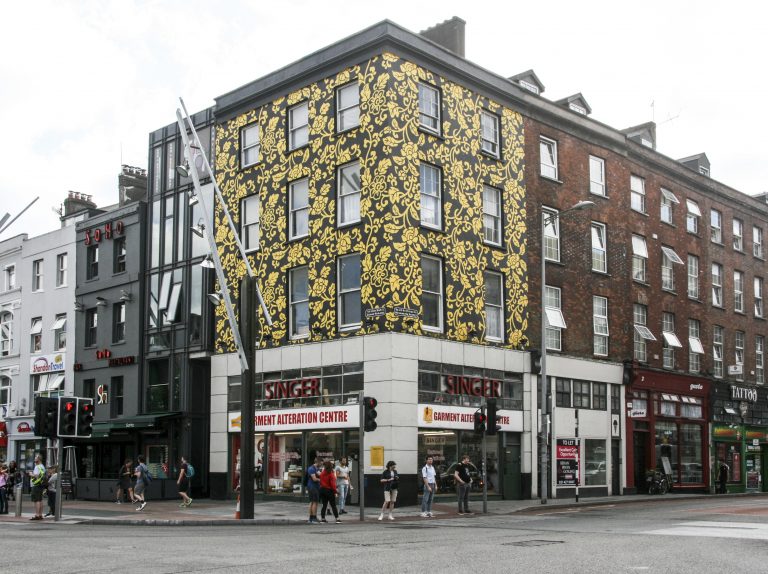This essay was originally published in PVA 5 (Dublin Edition) in 2013.
I came to recognise that it often took the first hour or so in front of a painting for stray associations or motivated misperceptions to settle down, and it was only then, with the same amount of time or more to spend looking at it, that the picture could be relied upon to disclose itself as it was. I spent long hours in the church of San Salvatore in Venice, in the Louvre, in the Guggenheim Museum, coaxing a picture into life. I noticed that I became an object of suspicion to passers-by, and so did the picture I was looking at.[1]
[One] kind of corrective to dogma is looking itself, pursued long enough.[2]
How might we teach this type of looking, which (Richard) Wollheim describes above as a necessary, if somewhat leisurely approach to visual art, to ‘coaxing a picture into life’, and which is variously called ‘close’, ‘deep’, or even ‘slow’, looking? It requires a discipline, that much seems uncontroversial. It is more difficult to identify of what this discipline consists and how it might be taught.
It is possible that the demand or, at least, support for such looking is widespread among those who teach the history and criticism of the visual arts. The demand for close looking appears to derive from at least two sources.
i. A concern for a general loss of visual attention and visual skills that are assumed to be essential to study the complex richness of visual artefacts.
ii. A distrust of hastily, clumsily, or over-confidently applied theoretical or interpretative methodologies.
The strong claim that follows from i. is that certain visual artefacts (and, of course, the next question is which ones and why?) require attention and skills that cannot be transferred from other areas of visual attention and other disciplines. I will return to this below.
As for ii., it is important to remember that this is not distrust of theory per se. This is not a demand for naive looking. Rather, if we accept Wollheim’s claim that ‘the term “theory” is in place only when some distinction is respected between description and explanation’,[3] then this distrust concerns more the apparent exhaustion of description by explanation. This exhaustion occurs when every further description of an artefact falls under an explanatory framework that itself allows for no further amendment. In such cases, whatever can be described can be explained. By contrast, the distrust of theory consists primarily of a demand for description to reciprocate fully and equally with explanation.
What is more, it is to acknowledge that saying or writing what we see – the work of ekphrasis – is by no means straightforward and should not be simply placed in the service of explanation. This is how Thomas Crow argues for the specificity of art-historical method against the borrowing of interpretative methods from other disciplines, such as film studies and literary criticism. The basic ekphrastic work of paraphrase, substitution and translation when faced with a mute work of art must be returned to, he argues, without the help of preferred terms of paraphrase (his particular targets are psychoanalysis and deconstruction; but he criticises ‘highly technical theories of language and signification’ in general). His problem with these latter preferences, as I have already suggested, is that they do not seem to allow for reciprocity in the work of analysis.
This particular vocabulary of paraphrase cannot be remade by the art historian’s particular use of it – which is another way of saying that the work of art itself has no independent claim or comeback against the mode of explanation made of it.[4]
Again, lest we forget, it is ekphrasis that allows for generalisation and argument, and that also encourages the viewer to see more in the visual artefact than they would otherwise.[5]
T. J. Clark’s 2006 book The Sight of Death: An Experiment in Art Writing provides us with what is perhaps the strongest, recent argument that the study of certain, internally complex visual artefacts, such as paintings, might correct a widespread loss or impoverishment of visual attention. The Sight of Death is by now well known for its record of ‘deep looking’ at two paintings by Poussin exhibited together at the Getty Museum. Clark’s diaristic account explicitly counters hasty theorisation.
I want to write a reaction to my two paintings, not a theory of them. […] I’d like to show how a theory of painting comes into being – how a painting as opposed to a proposition or a narrative or a geometric figure, instigates and directs an enquiry into ‘what it is saying’.
A painting ‘comes into being’ through slow, repeated viewing: Coming to terms with [these paintings] is slow work. But astonishing things happen if one gives oneself over to seeing again and again.[6]
Moreover, Clark understands this slow, deep looking to be a form of political action, or, at the very least, a necessary corrective to other, dominant types of attention. His argument is worth quoting in full:
We are living, I reckon, through a terrible moment in the politics of imaging, envisioning, visualising; and the more a regime of visual flow, displacement, disembodiment, endless available revisability of the image, endless ostensible transparency and multi-dimensionality and sewing together of everything in nets and webs – the more this pseudo-utopia presents itself as the very form of self-knowledge, self- production, self-control – the more necessary it becomes to recapture what imaging can be: to suggest what is involved in truly getting to know something by making a picture of it: to state the grounds for believing that some depictions are worth returning to, and that this returning (this focusing, this staying still, this allowing oneself to respond to the picture’s stillness – everything hidden and travestied, in short, by the current word ‘gaze’) is a form of politics in itself, meeting other forms head on.[7]
This is a return to looking without looking for, without, that is, the looking that comes so easily to a generation of students skilled in instant messaging, tweeting, Googling, and so on, where looking becomes a method of scanning for consumable quantities of information. As well as scanning, another type of looking in opposition to close or deep looking would be sloppy or casual looking, a kind of thematic interpretation that allows for generic paraphrase. This is a type of looking compatible with a certain type of reductive journalistic (in the worst sense of the term) discourse widespread across the art world, which prepares the work of art for consumption: ‘this work (of art) is about …’ ‘this work deals with issues of …’ and so on.
The study of literature faces comparable problems following from a similar deterioration of attentive, close reading, both outside and inside the institution. Outside, the threats to close reading are similar to those to close looking: reading as scanning highly abbreviated forms of textual information or as looking to find what you already know. Inside the institution, especially in the US, close reading has been found guilty by association with the elitist canonical prejudices of the criticism that first introduced it either side of the Second World War. (Canonical works were treated as autonomous texts, whose value was ahistorical, beyond the contingencies of history and politics, and beyond the educational privileges of white, middle-class, heterosexual men.) As the canon of literature has been, quite rightly, diversified, close reading has been superseded by contextualist and historicist methods of interpretation that seek to move from text to context. As Jane Gallop suggests, this might be a case of throwing the baby out with the bathwater, and thereby abandoning the ethics of close reading. The latter, which consists of looking at what is there on the page rather than what ought to be there, allows a student to encounter what she does not know and what she does not anticipate. This in itself is an ethical gain, Gallop argues, if we admit that students can take this level of attention to other texts and even to other persons. Gallop perhaps overstates her case here, but she reminds us also that close reading was introduced at a time when the established hierarchies of the university system were eroded by the arrival of lower class and non-white students. It was a practice that required from students only ‘patience and perspicacity’, rather than prep school and other private advantages.[8] In a more recent essay, Gallop develops her claim that close reading performed a populist function in education. It ‘made possible active learning’ and eroded the model of teaching whereby tutors pass on quantifiable units of knowledge to students who ‘receive, repeat, and apply that knowledge.'[9]
The fact that this debate about close reading currently takes place in the study of literature indicates that the study of visual culture might find, despite Crow’s reservations, some pointers in the teaching of close looking. A core example of this teaching in literature is provided by the Hum 6 course at Harvard taught by Reuben Brower in the 1950s. Brower was an advocate of ‘reading in slow motion’, as his eponymous essay shows.[10] His ambition was to introduce a student to a ‘lifetime reading habit.’ This is evidently a laudable ambition. In his ‘The Return to Philology’, literary critic and former student of the Hum 6 course Paul De Man describes Brower’s teaching method:
Students, as they began to write, were not to say anything that was not derived from the text they were considering. They were not to make any statements that they could not support by a specific use of language that actually occurred in the text. They were asked, in other words, to begin by reading texts closely as texts and not to move at once into the general context of human experience or history. Much more humbly or modestly, they were to start out from the bafflement that such singular turns of tone, phrase, and figure were bound to produce in readers attentive enough to notice them and honest enough not to hide their non-understanding behind the screen of received ideas that often passes, in literary instruction, for humanistic knowledge.
De Man implies that this was a disciplining process: ‘[Students] no longer felt free to indulge in any thought that came into their head or to paraphrase any idea they happened to encounter.'[11]
Yet he does not expand upon how this discipline is to be taught. As Jonathan Culler argues, there is little that would lead a reader naturally or necessarily to such reading. Here we encounter a problem for Gallop’s populist, anti-elitist ambition for close reading. If it requires training in a discipline, then how is this to be done? Is it to be taught by example rather than by systematic method? Gallop lists five sorts of things that close reading might attend to: i. unusual vocabulary, ii. redundant words or phrases, iii. surprising images or metaphors, iv. italics or parentheses, and v. overlong footnotes.[12] These are elements that a student of literature would be trained to overlook or dismiss as trivial as she searched for the main ideas of a text. Yet they are conspicuous or emphatic elements, as much part of the text as those that support the main ideas. Gallop likens attention to these otherwise marginal elements to the annoying habit of children to point out some minor detail in a story that interrupts the ‘straight and narrow’ path of the well-trained adult reader. In pointing out these details, the child indicates her lack of training.
Could we do something similar for close looking? Certainly, our teaching involves attention to anomalies, redundancies, surprises, and to details that might thwart certain visual habits and easy projections. Do we do this enough? Probably not. I get annoyed at the ‘interruptive child’ in class who points out the detail that does not fit with the standard reading of canonical works. Sometimes that child is just wrong. Sometimes she is right, but does not yet know why. Or she is right, but for the wrong reasons. I rarely doubt that I am the one to correct her or to integrate the detail that she has noticed into the standard account. Yet I also encourage students to slow down their looking and try to estrange them from certain expectations and certain paraphrases. I have made students sit Wollheim-like in front of paintings for at least an hour and a half, simply describing what they see. I would prefer to have them sit there longer, but timetabling does not allow. However, I mistakenly asked the students to make their own choices of painting to study. This meant that some students chose paintings that were arguably lacking in the complexity and richness that a close looking would reward. So close reading again appears to rely upon some construction of a canon, even if we anticipate, as Gallop does, that such reading will expand to artefacts beyond this canon, even beyond literature, so that students begin close reading adverts, legal documents, till receipts, and so on. It also relies upon a charismatic tutor, one who possesses the rhetorical techniques to help students to see more, and one that students must trust as they embark upon what is quite an unpredictable endeavour and which does not display easily quantifiable stages of development.
Close looking does not sit easily with standardisation. The learning involved does not derive from a set of prescriptive tools that allows the teacher to quantify the value acquired by students in their learning, and to then teach to those quantities. Standardisation does not deny such uncertainty, of course. It simply does not ascribe value to it. So, if we are in support of close looking, we require some strong account of its value even as we admit that we might necessarily struggle to quantify just what this is. I have tried briefly to indicate how such an evaluation might begin and I would suggest that we need a debate on this issue comparable to that which has taken place in the study of literature. In the spirit of debate, therefore, I want to end with two quite different questions, the answers to which might be obvious to those with more pedagogical know-how and teaching experience than I. Firstly, does an emphasis upon slowness, closeness, and upon ‘contaminating’ (the word is Gallop’s) the habits of looking acquired by students prior to their education, put students at a disadvantage by denying them competence in the professional currency of ideas, methodologies, and interpretative schemata?
Secondly, in our teaching, can we allow for an understanding of competence based upon the ‘passionate state of wonder’ from which a search for understanding begins, as difficult to quantify or to readily apply as this competence might be?[13]
Dr Timothy Stott is Head of Department, History of Art and Architecture, Trinity College Dublin.
Notes
[1] Richard Wollheim, Painting as an Art (London: Thames & Hudson, 1987), 8.
[2] T. J. Clark, The Sight of Death: An Experiment in Art Writing (New Haven: Yale University Press, 2006), 12.
[3] Ibid., 10.
[4] Thomas Crow, The Intelligence of Art (Chapel Hill: University of North Carolina Press, 1999), 5.
[5] Jas Elsner, “Art History as Ekphrasis,” Art History 33, vol. 1, February (2010): 10–27.
[6] T. J. Clark, The Sight of Death, 83, 5.
[7] Ibid., 121–22.
[8] Jane Gallop, “The Ethics of Reading: Close Encounters,” Journal of Curriculum Theorizing 16, no. 3, Fall (2000): 13.
[9] Jane Gallop, “The Historicization of Literary Studies and the Fate of Close Reading,” Profession (2007): 184–85.
[10] Reuben Brower, “Reading in Slow Motion,” In Defense of Reading: A Reader’s Approach to Literary Criticism, edited by R. Brower and R. Poirier (Dutton, 1962).
[11] Paul De Man, ‘The Return to Philology’, The Resistance to Theory (Minneapolis: University of Minnesota Press, 1986), 23–24.
[12] Jane Gallop, ‘The Ethics of Reading: Close Encounters’, Journal of Curriculum Theorizing 16, no. 3, Autumn (2000): 7.
[13] Dennis Atkinson, ‘Looking Awry at the Notion of Core Competences in Visual Art Education’, undated <www.unesco.org/new/fileadmin/MULTIMEDIA/HQ/CLT/CLT/pdf/ fpdennisatkinson106.pdf>.




